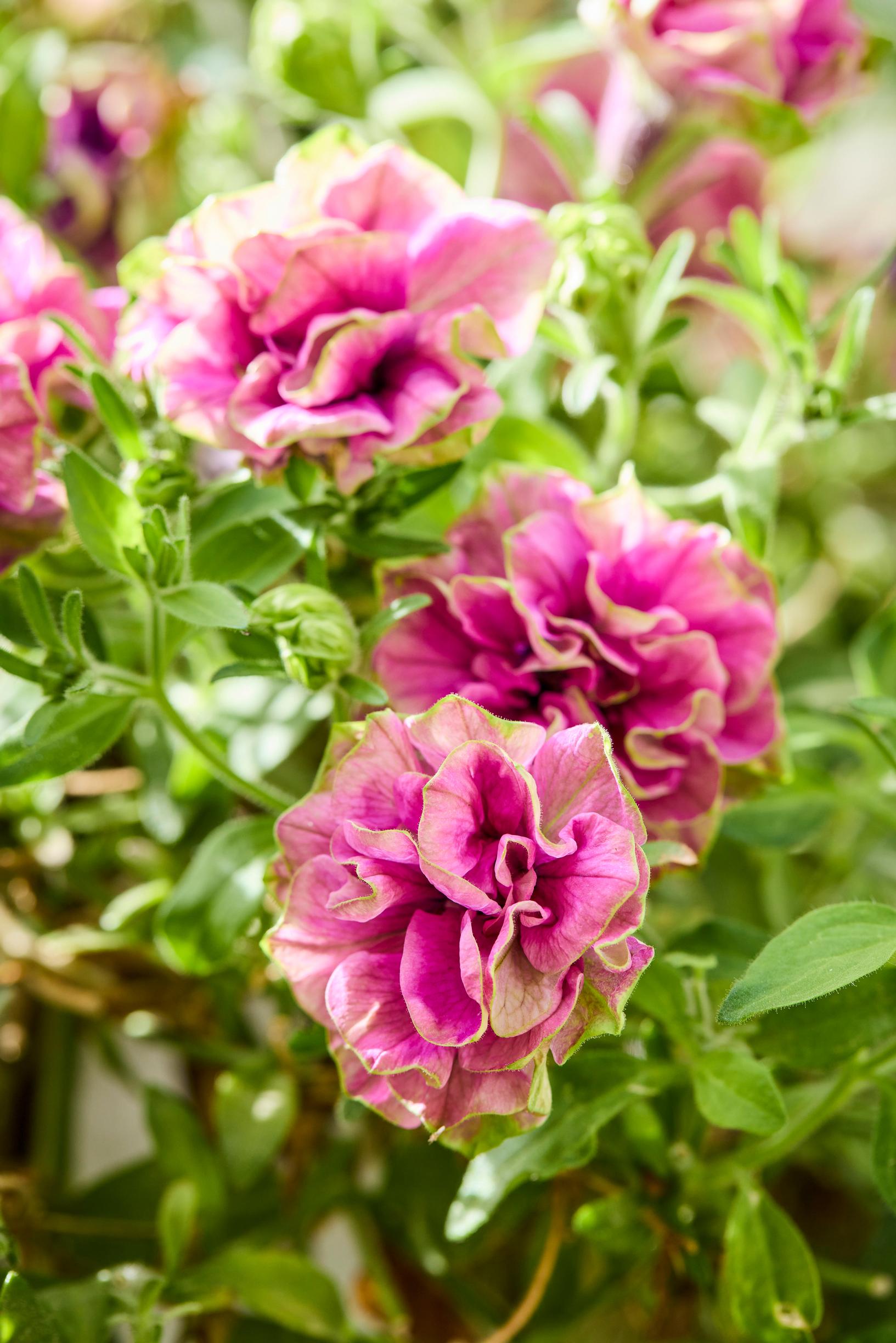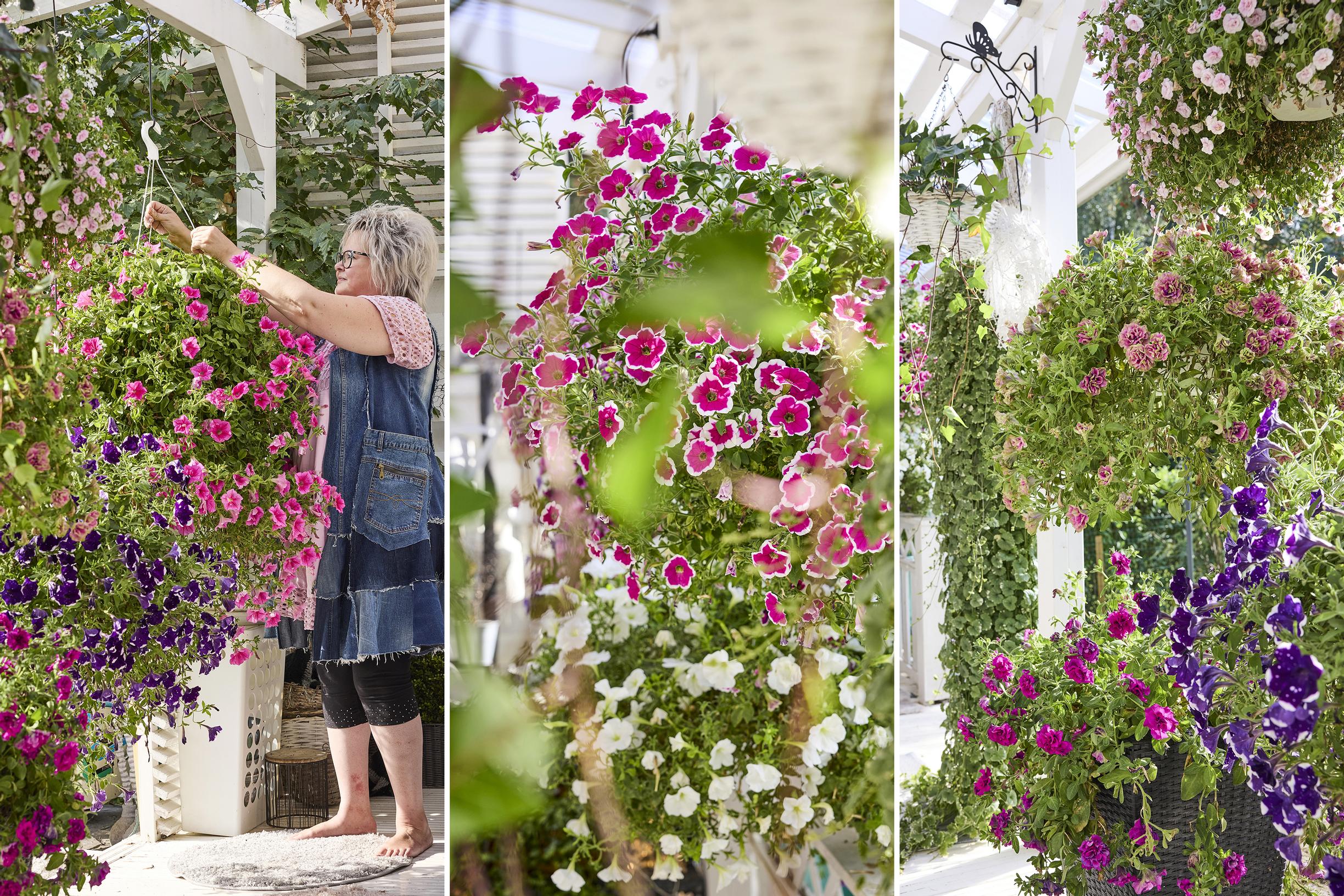
The flower whisperer’s incredible hanging baskets: How Maarit grows lush summer spheres
Finnish Maarit loves flowers but hates weeding. Her garden doesn’t have a single flower bed, yet it blooms lavishly from spring to fall—all thanks to her hanging baskets. Check out Maarit’s tips for caring for summer flowers, and discover her favorite hanging plants!
What made you fall in love with hanging basket plants?
They’re wonderfully lush from the moment you buy them and bloom from May well into autumn. If I grew them myself from seedlings, they wouldn’t start blooming until later in the summer. Another reason is that I love flowers but I hate weeding. By growing lush summer flowers in containers, I don’t have to fight with weeds. My yard has no flower beds at all. I usually end up getting around 30 hanging basket plants for the summer.
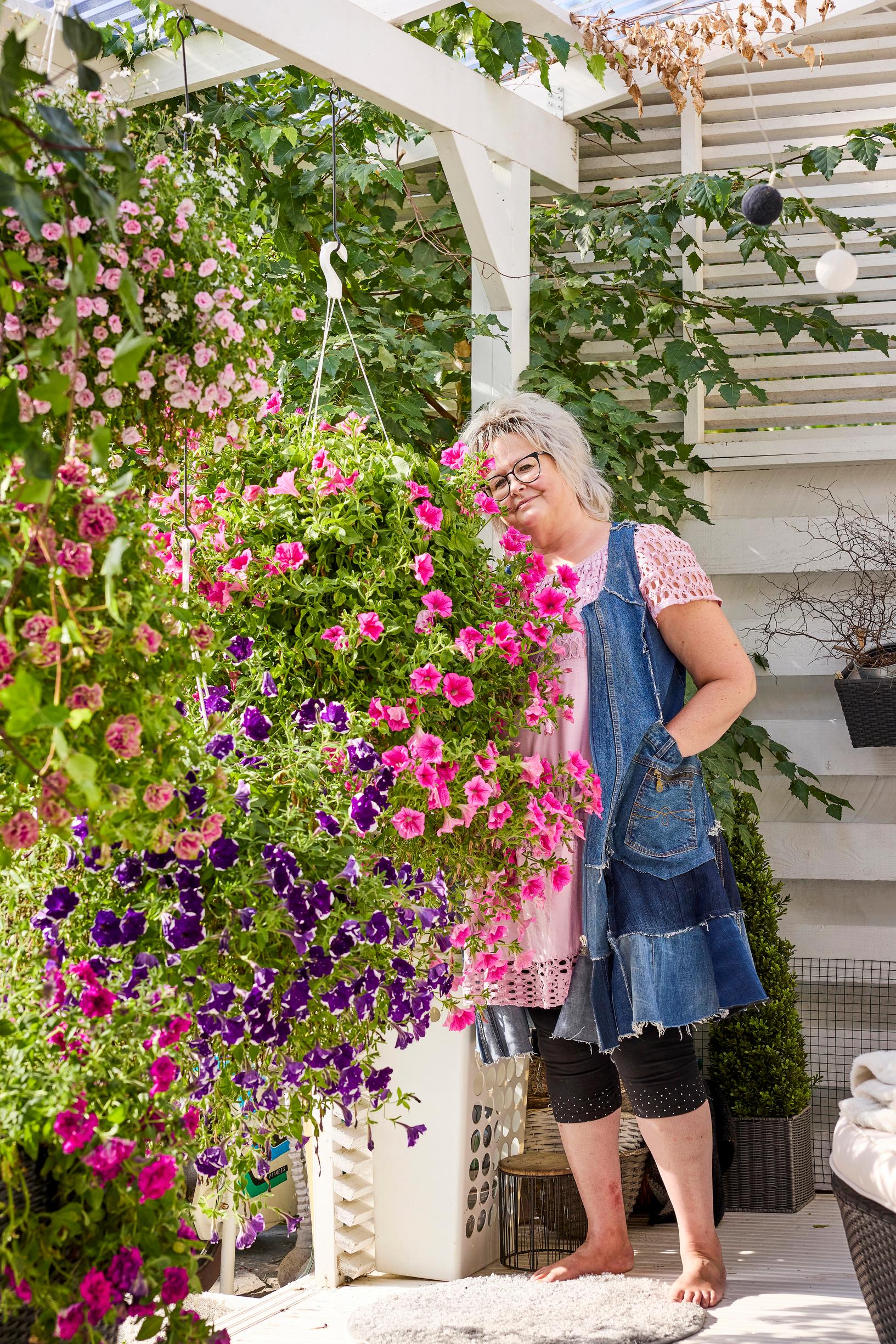
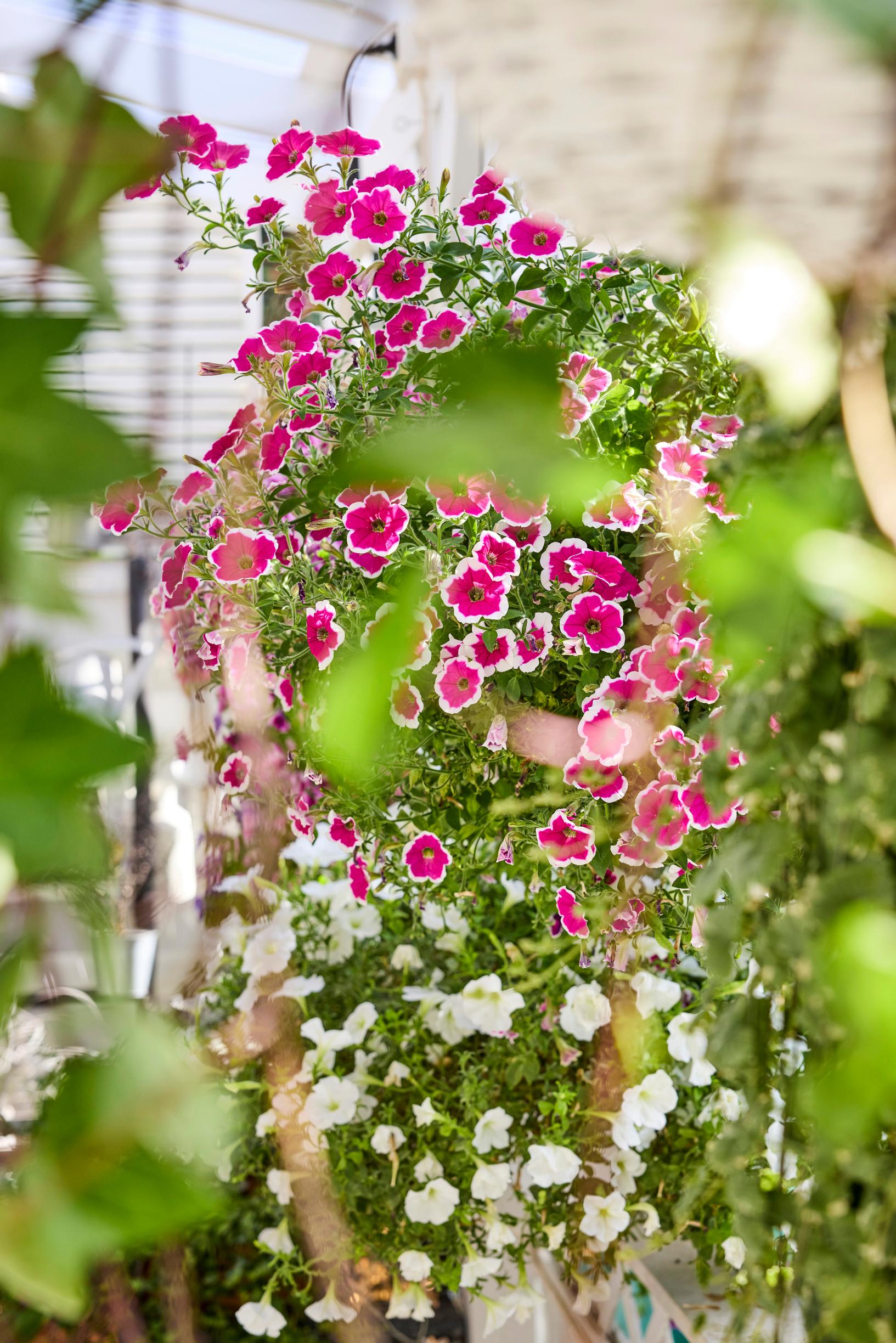
Hanging basket plants grow in the front yard and on the covered terrace. How do these spots differ?
My most cherished and beautiful hanging baskets adorn the terrace on the southwest side of the house, which I call my oasis. On the covered terrace, the flowers are sheltered from rain and cold, so most species thrive there until October.
I grow hanging basket plants in pots on the long steps facing northeast in my front yard. Walking up the steps to the front door puts me in a good mood, even after a tough day at work. The front yard is exposed to rain showers, but watering is easy.
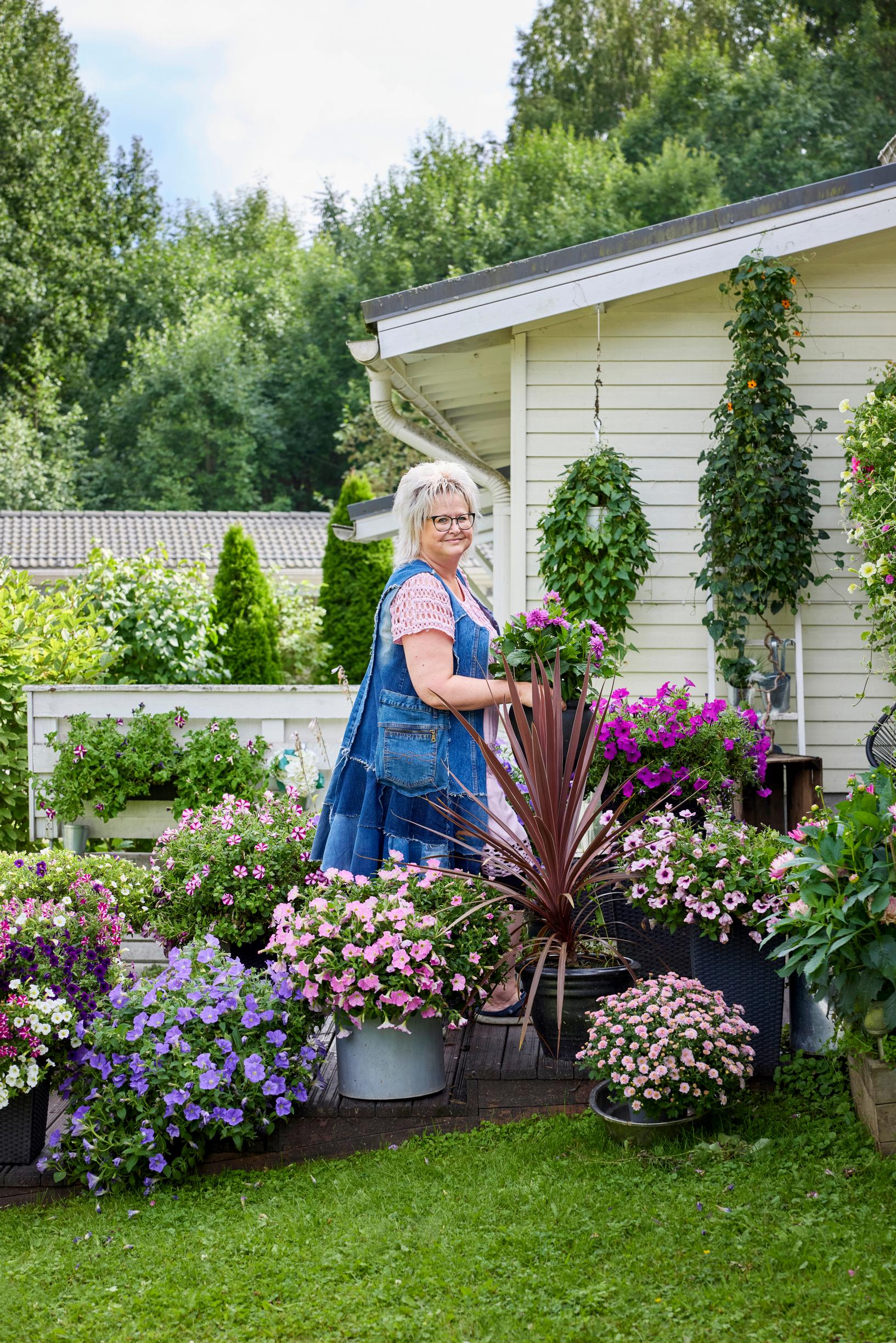
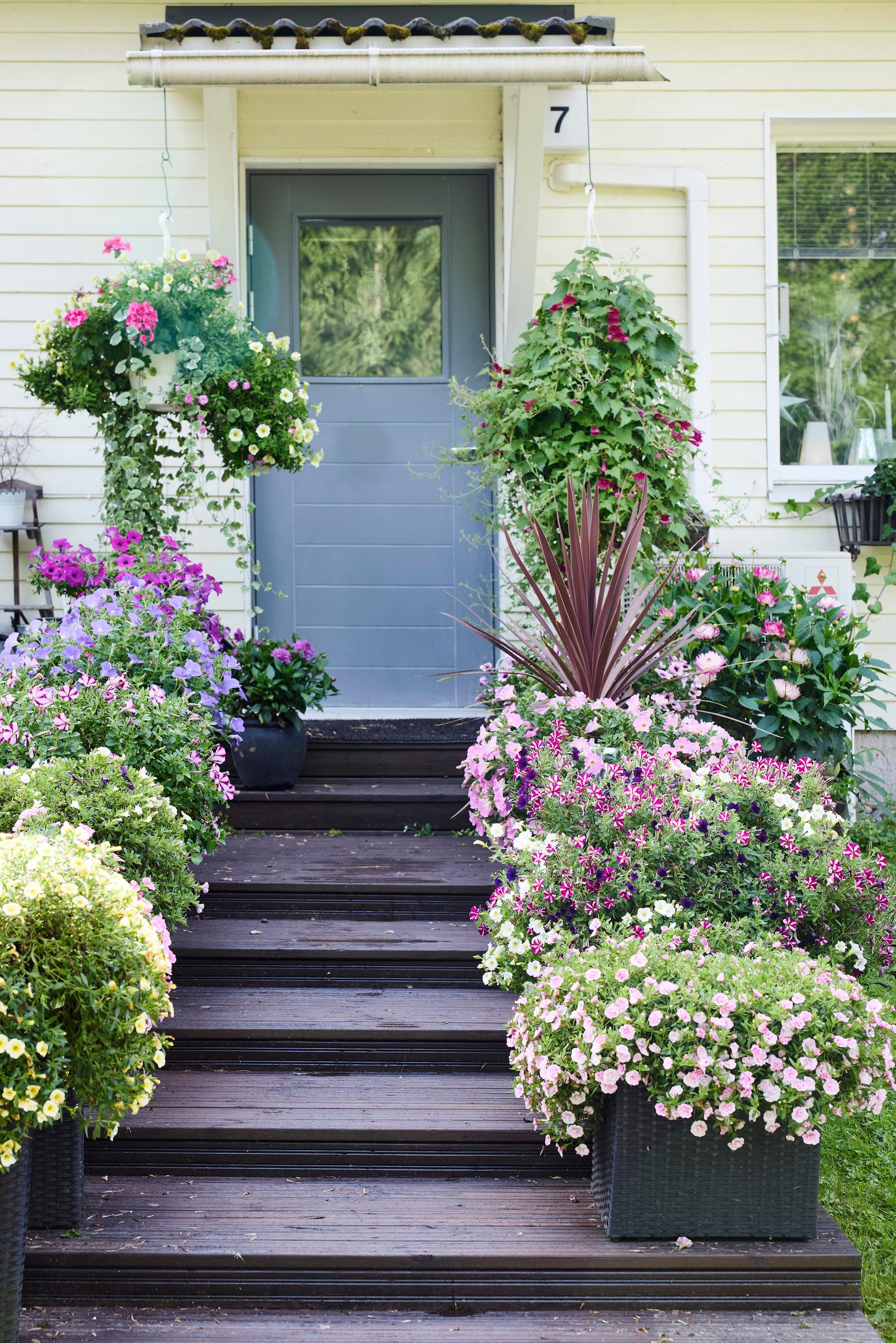
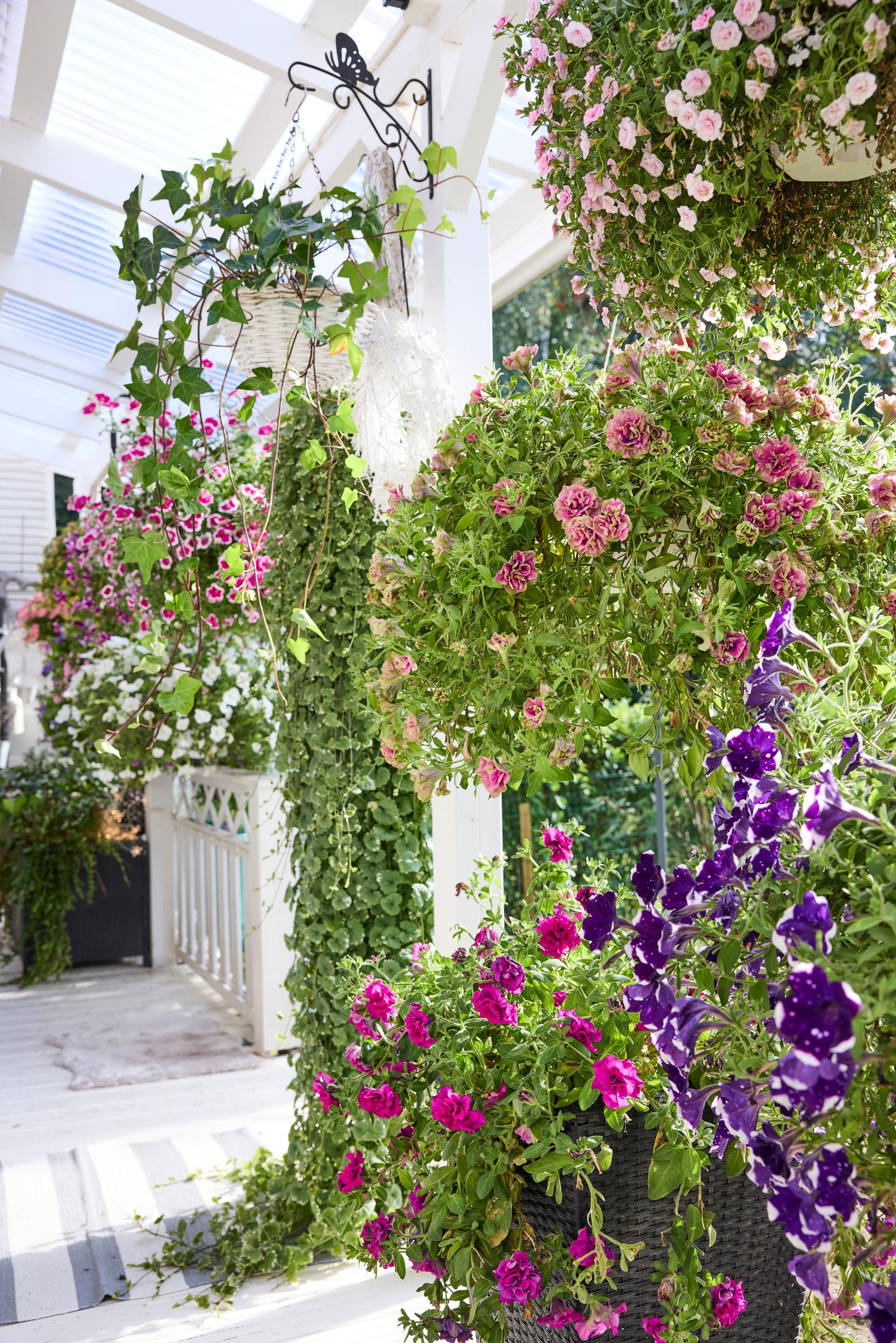
Which varieties are your favorites?
My top favorite is “million bells,” or small petunias. I love both the double and single varieties, including unusual colors. They withstand rain much better than ordinary petunias and handle downpours easily. You don’t necessarily have to remove the spent blooms, but taking off the browned ones makes the plant look prettier.
You do have to deadhead regular petunias, but they’re an absolute must every summer. The double-flowered varieties in softly muted shades are my favorites.
Overall, I prefer purple and pink plants, while bright red isn’t really my thing.
Of the climbing varieties, my favorite is black-eyed Susan, which blooms until frost. Its growth speed only increases as fall approaches. The pink one is especially gorgeous, like a veil.
I also like purple Lophospermum, which produces large, majestic blooms. The old flowers drop off, so the plant always stays fresh-looking. All it needs is regular watering with fertilizer.
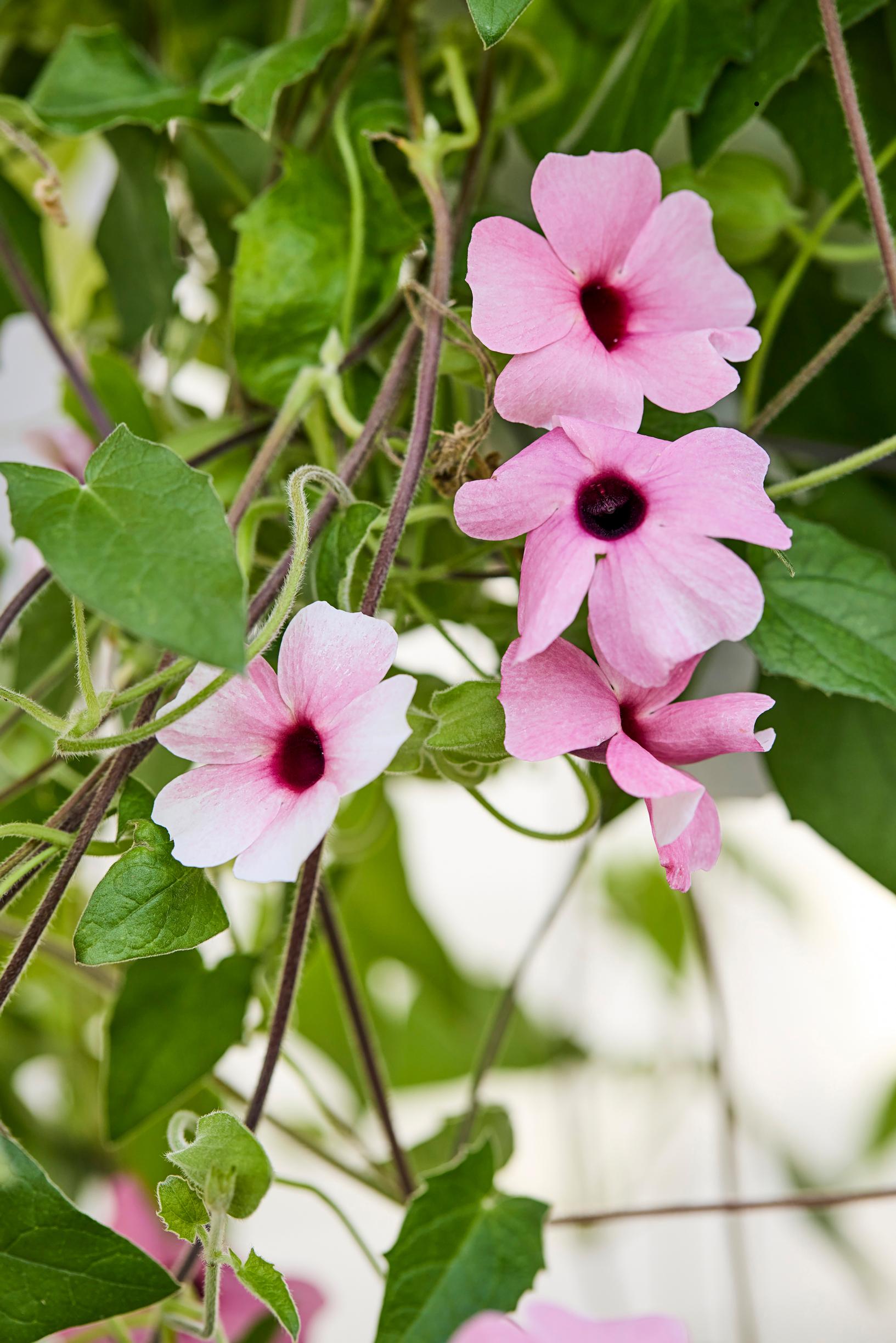
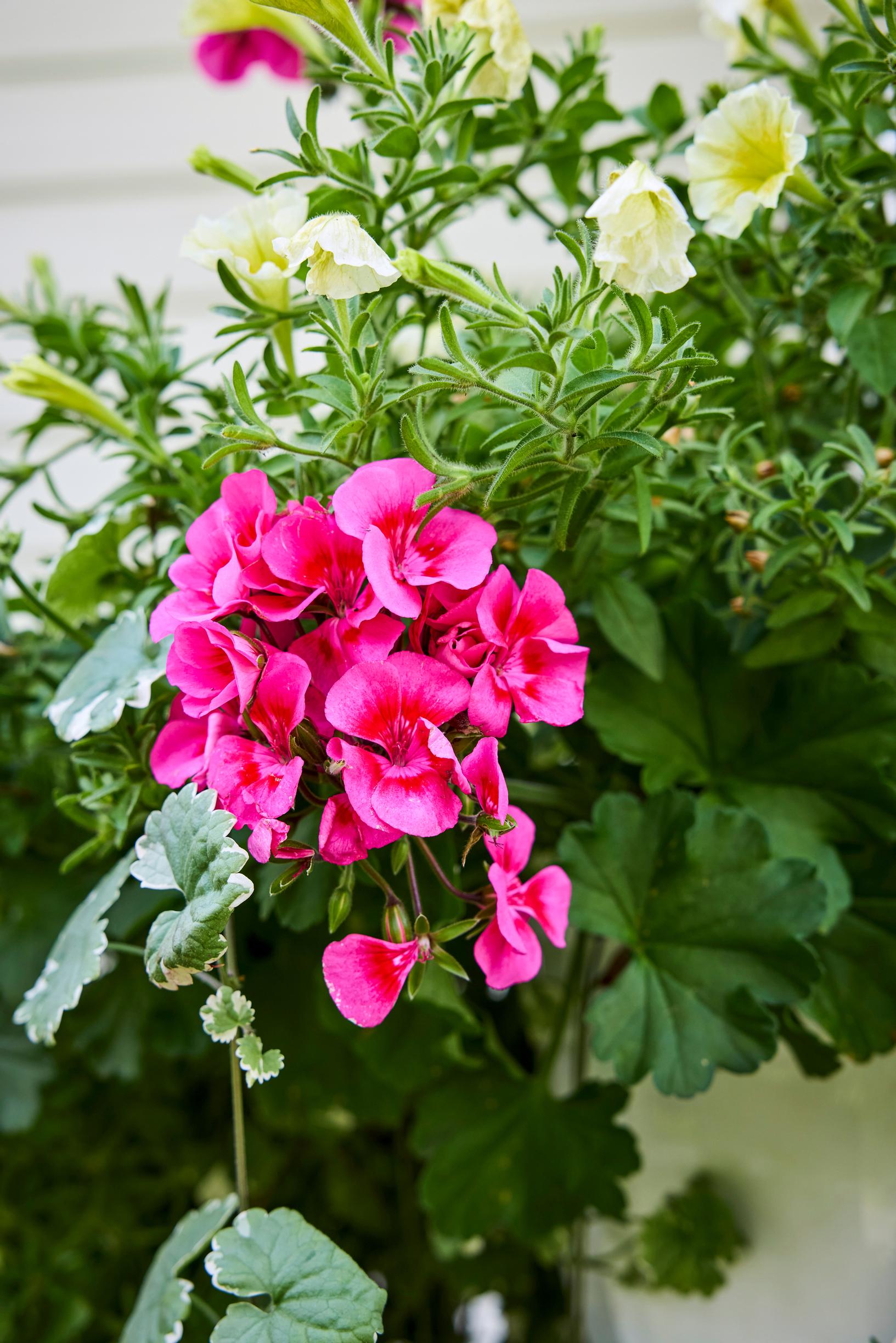
“You do have to deadhead regular petunias, but they are a must.”
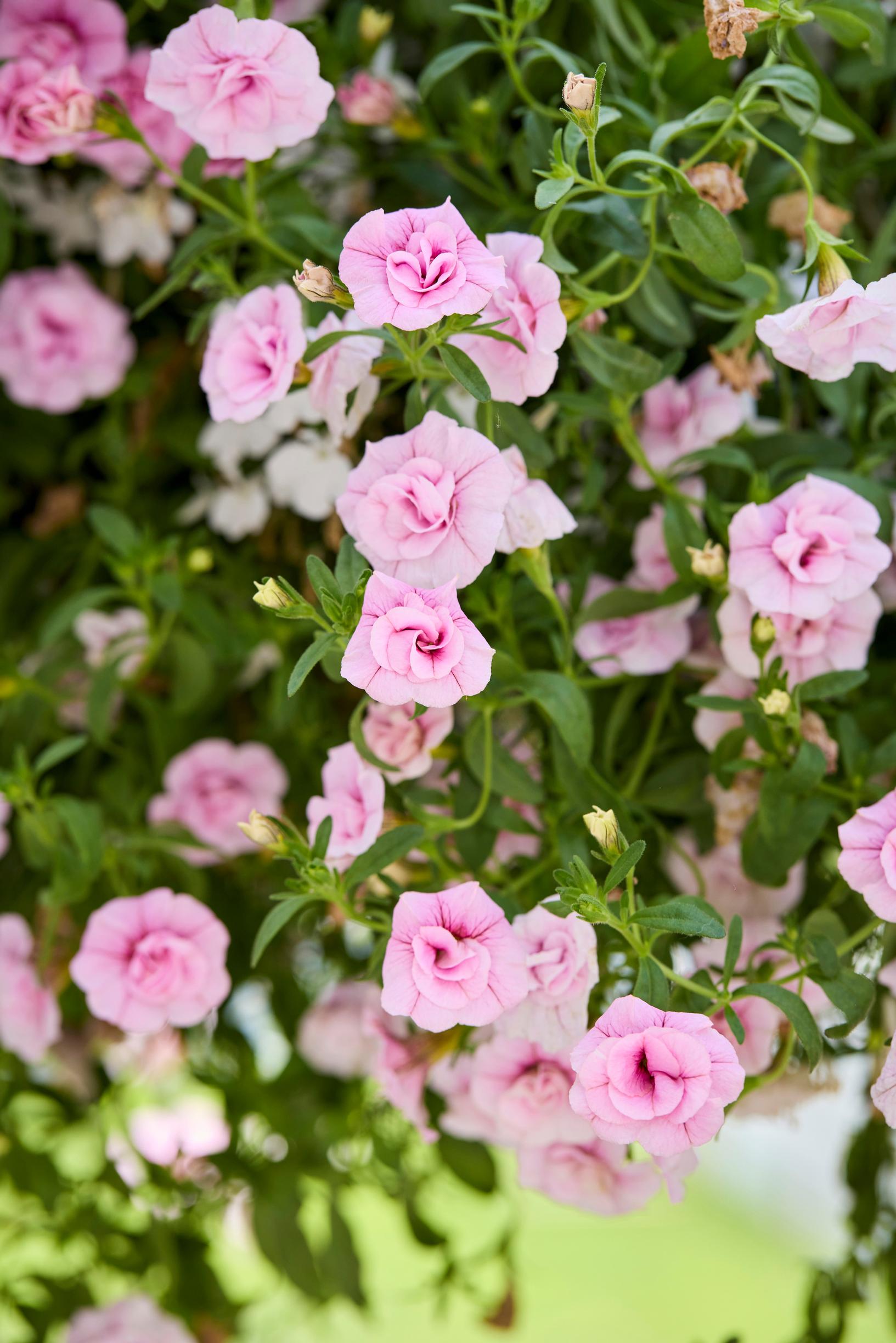
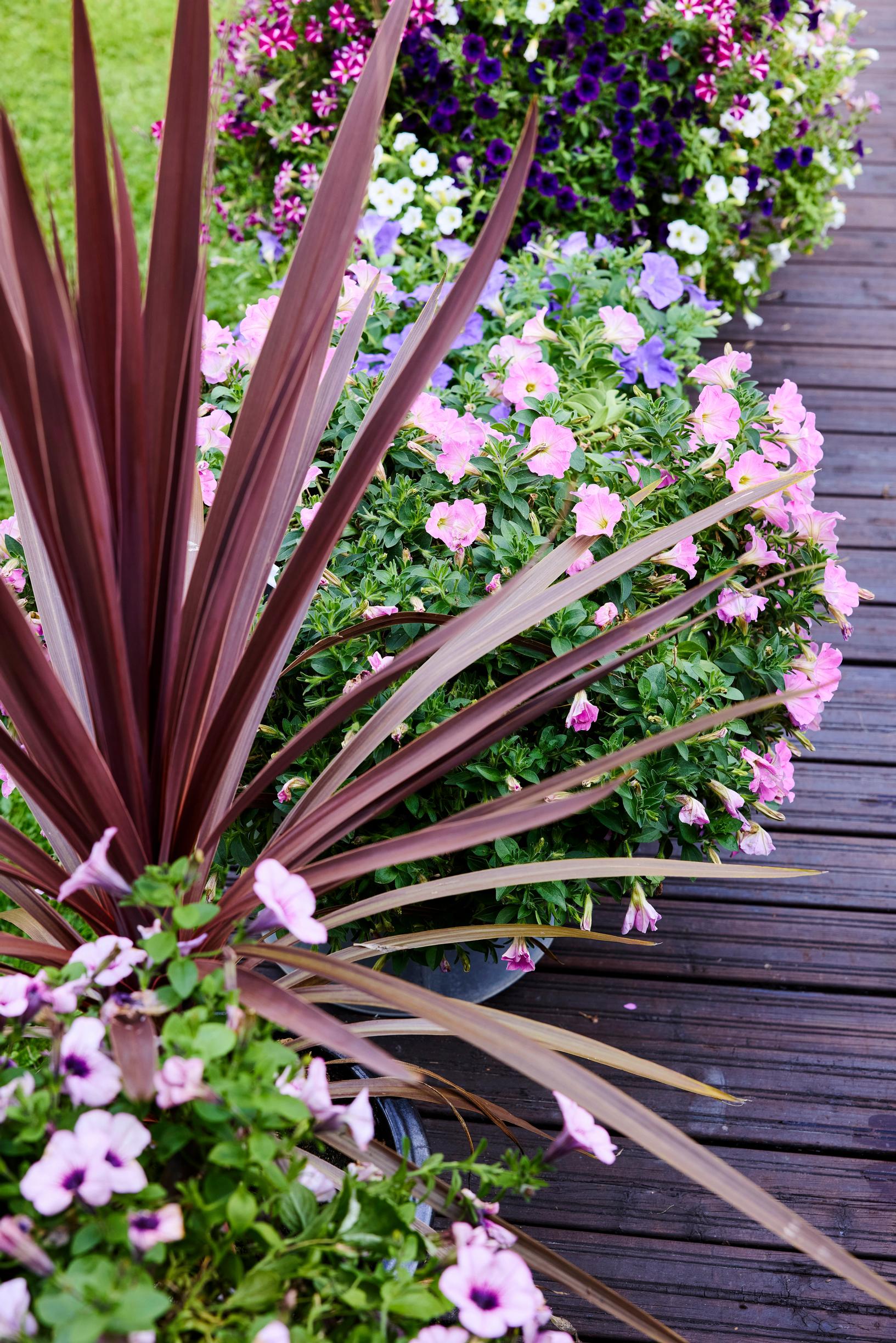
Where do you get your summer-flower hanging baskets?
I buy them straight from local nurseries, where I can find the best seedlings and great advice. The growers even raise plants based on my requests. I purchase my flowers in early May, when the selection is at its best. Specially colored varieties sell out fast, so I don’t wait even if frost is predicted. I move the plants inside on cold nights, making my family step around them. For me, hauling them in and out is my evening and morning workout.
How do you get your summer-flower hanging baskets to flourish?
You have to keep watering, fertilizing, and deadheading. On hot days, I water in the morning before work and again in the evening after the sun goes down. I give the plants ordinary fertilizer water every time I water them, which keeps them lush and blooming.
From May to July, I rotate the baskets often so they get even light and grow full on all sides. By August, I’ve usually had enough of turning them.
Removing spent blooms can feel tedious at first, but once I get going, it’s actually relaxing. I love spending my evenings checking and pinching off the flowers while chatting to them. That’s my flower therapy—flowers always respond exactly how I want.
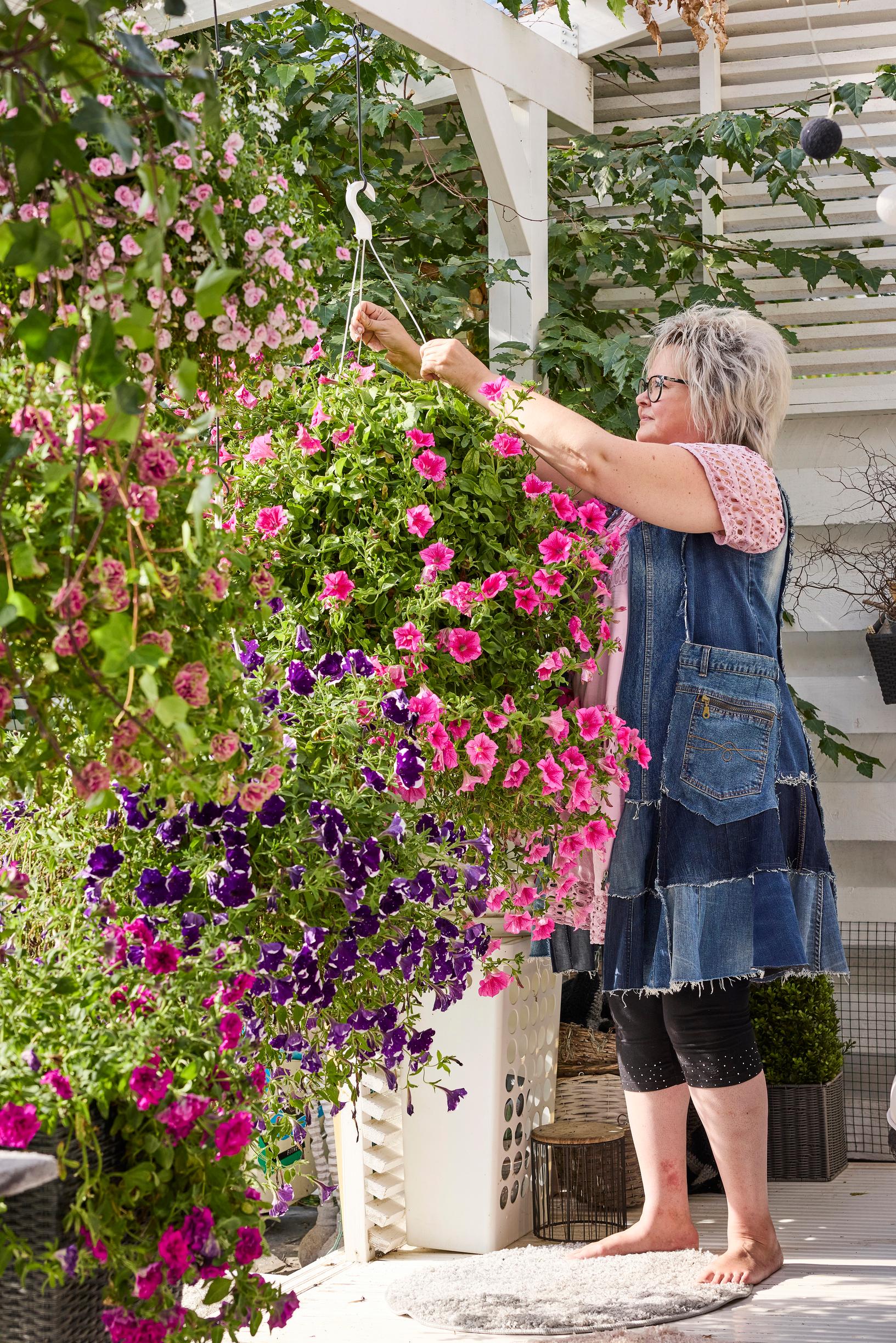
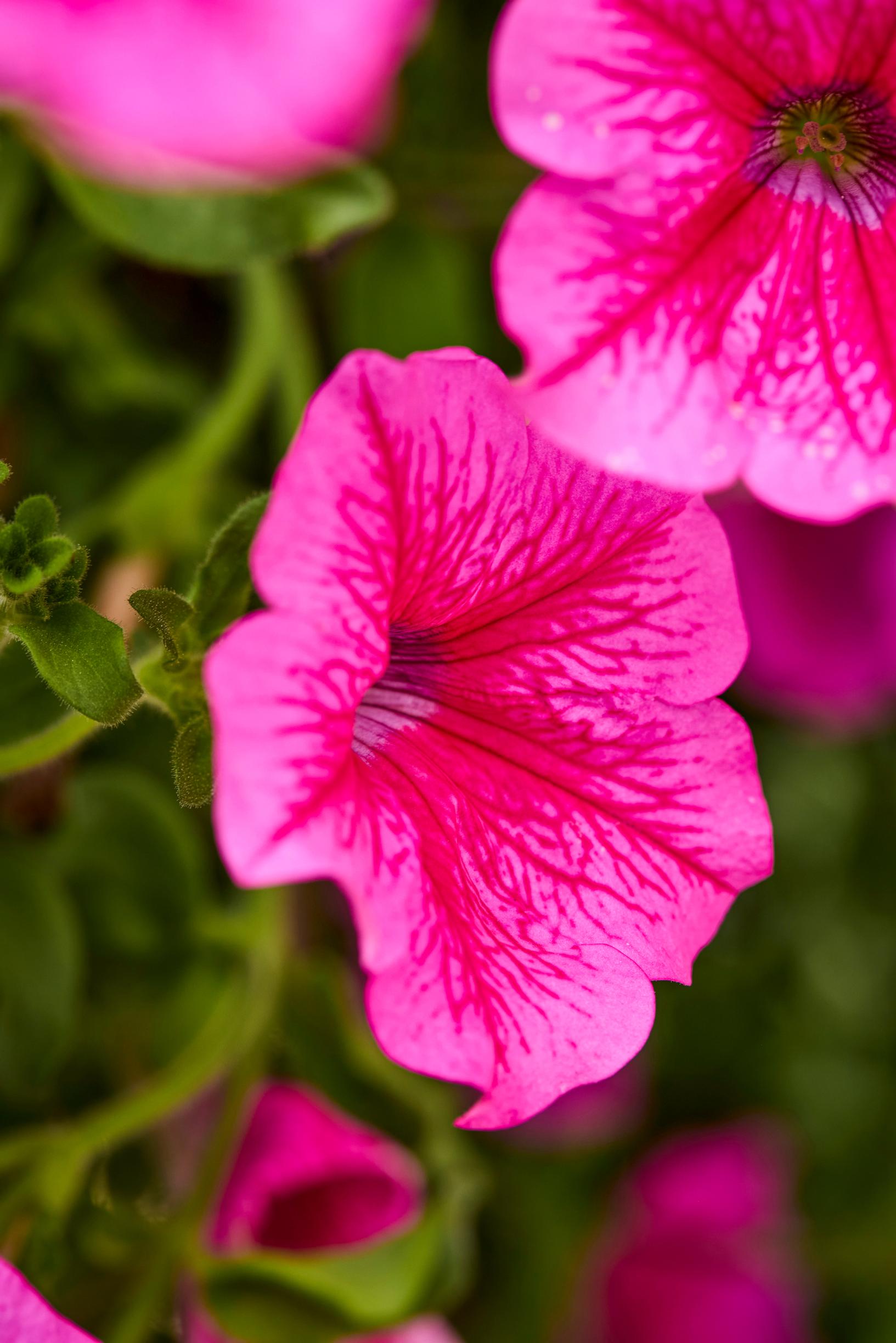

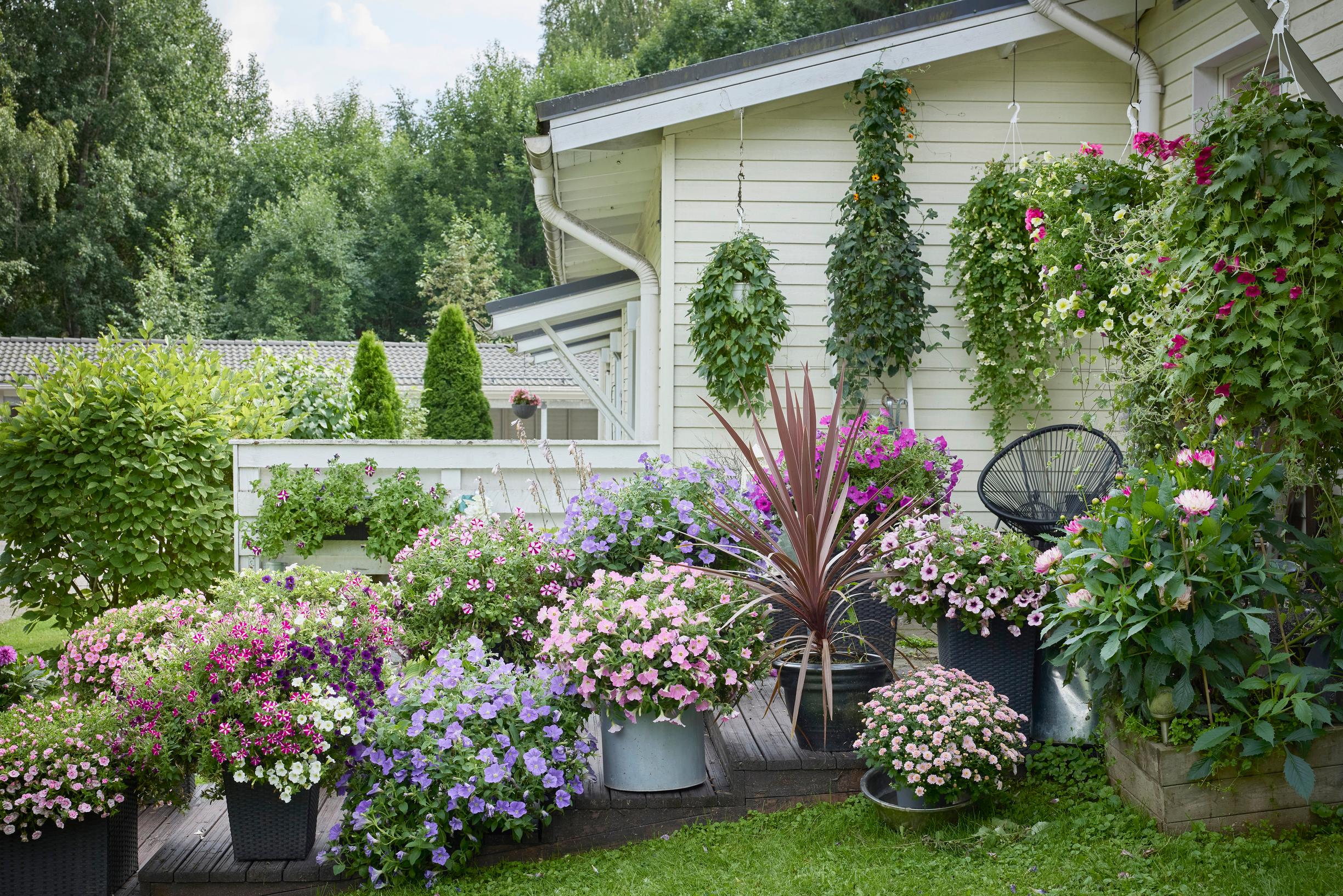
7 × Maarit’s favorite hanging basket plants
1. Purple Lophospermum
Lophospermum purpusii
Often called purple or trailing Lophospermum, this vigorous vine delights with white or deep purple blooms. It needs plenty of water. Spent flowers drop to the ground.
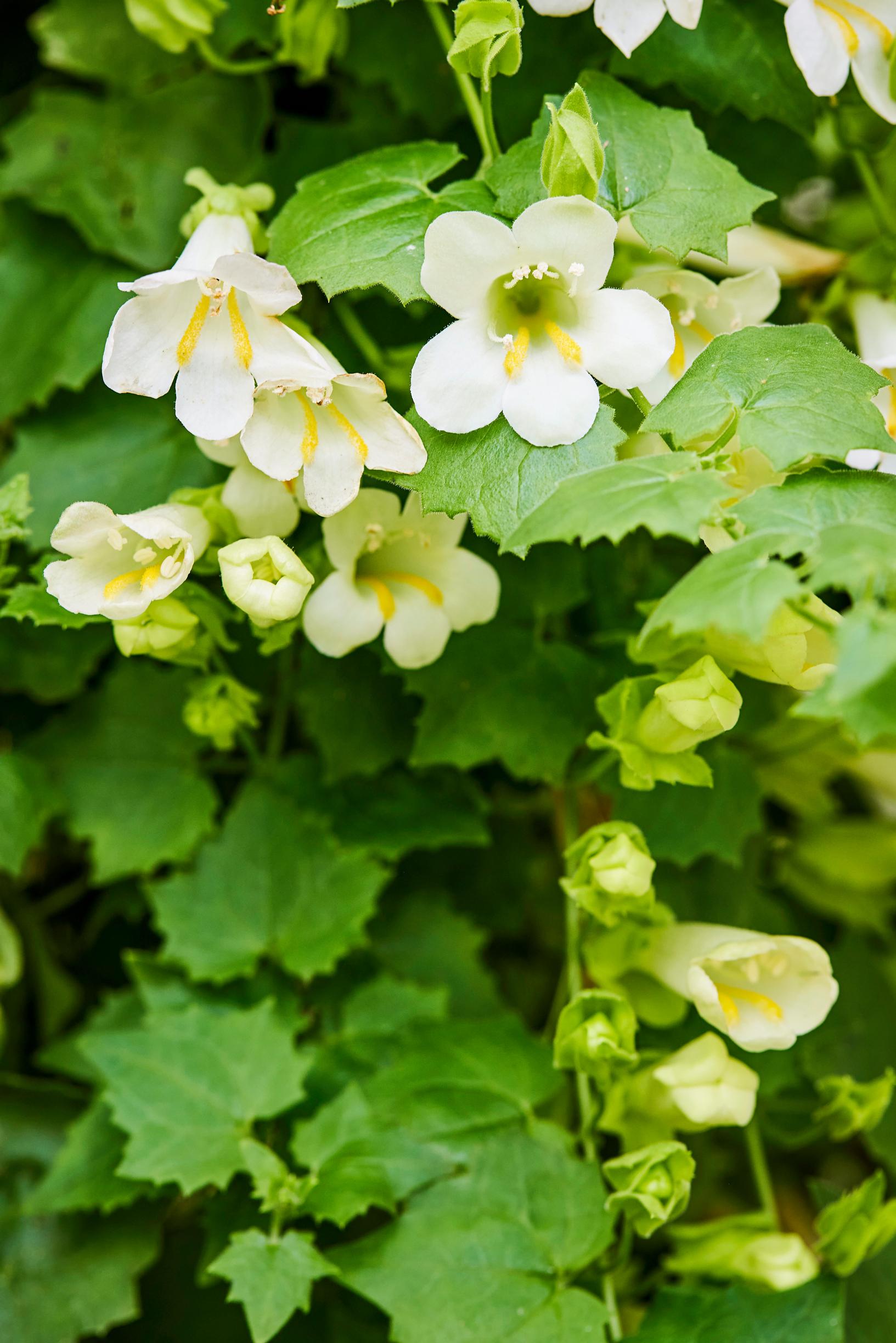
2. Petunia
Petunia × atkinsiana
A classic summer favorite that dazzles with showy blooms. A huge ball of flowers requires plenty of watering and prompt removal of spent blooms.
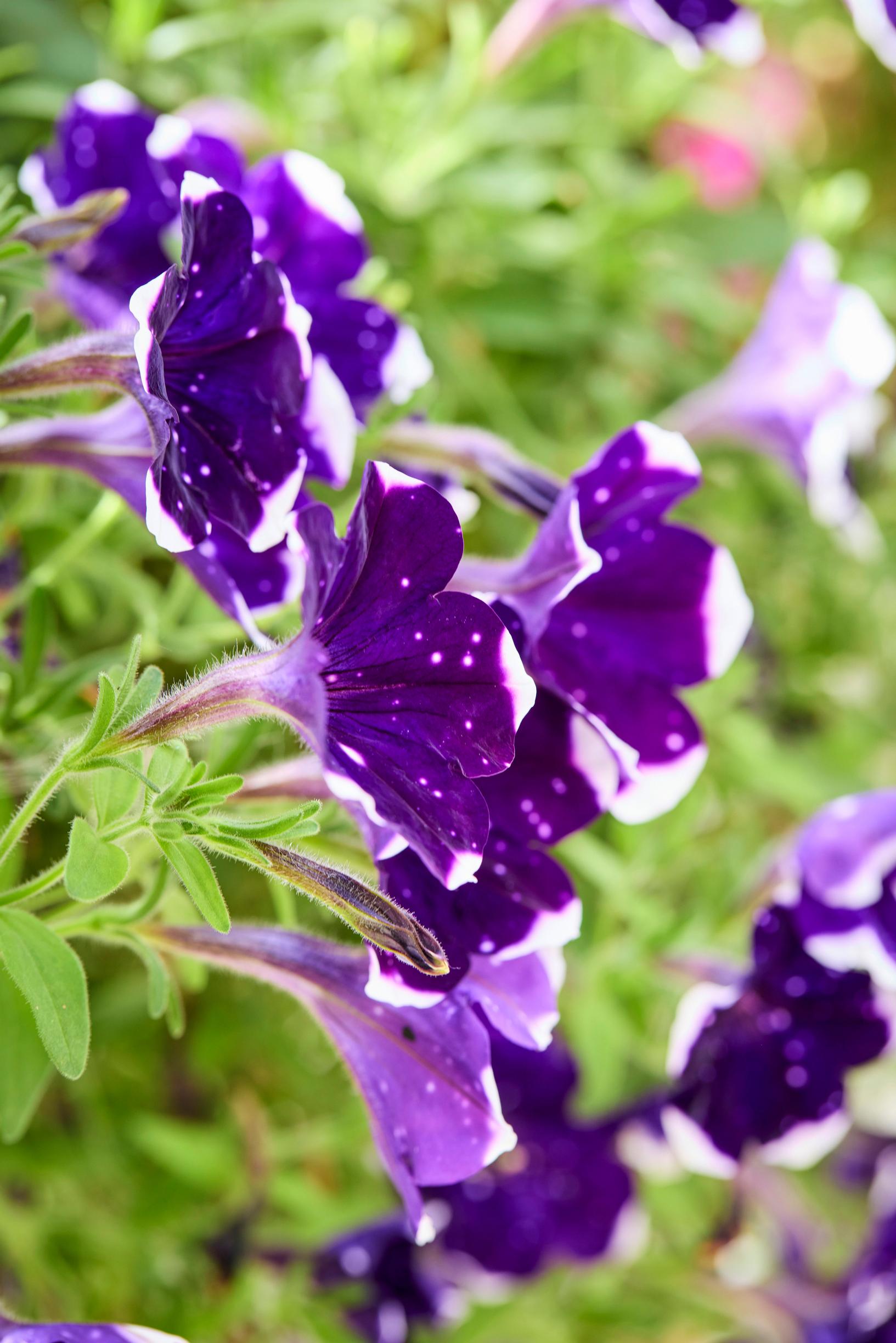
3. English ivy
Hedera helix
This vine thrives in partial shade or shade, producing a cascading growth all summer long. Under a covered terrace, it can stay green late into the year.
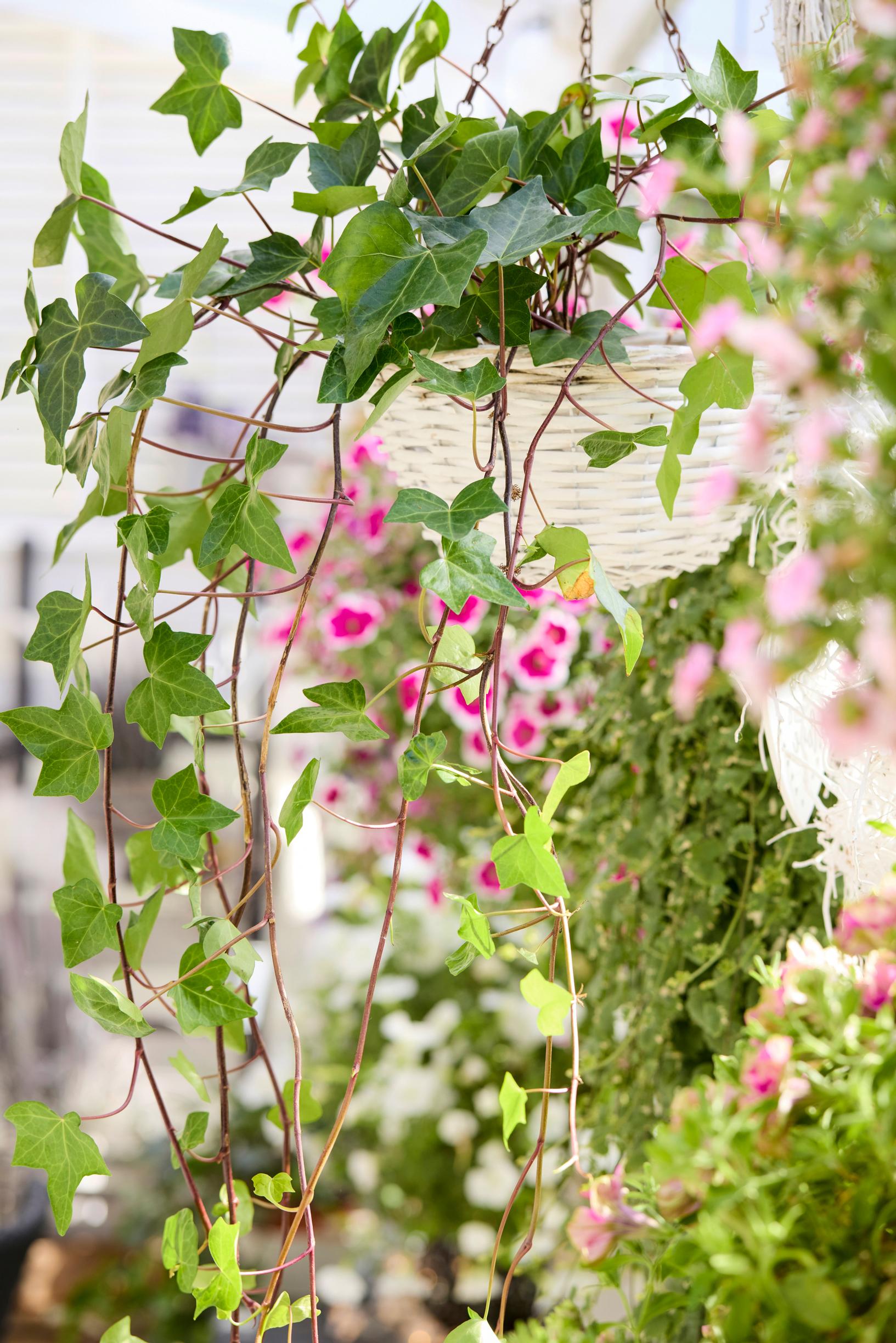
4. Small petunia
Calibrachoa-varieties
This easy-to-care-for, heavy-blooming plant is perfect for baskets. Often called “million bells.”
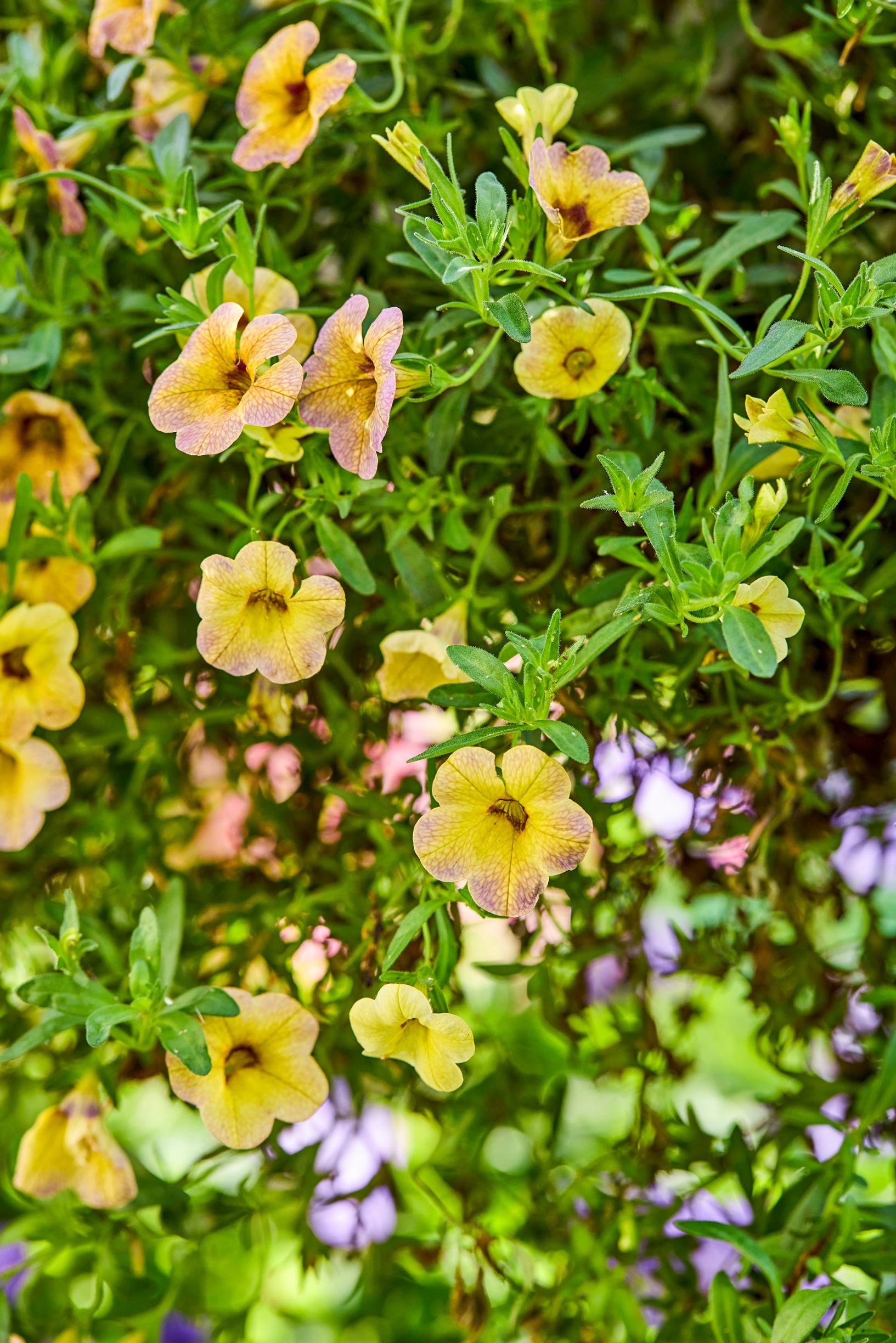
5. Trailing lobelia
Lobelia erinus Pendula-Group
A lovely summer flower that forms a delicate cloud of petals gracefully spilling from a basket or container.
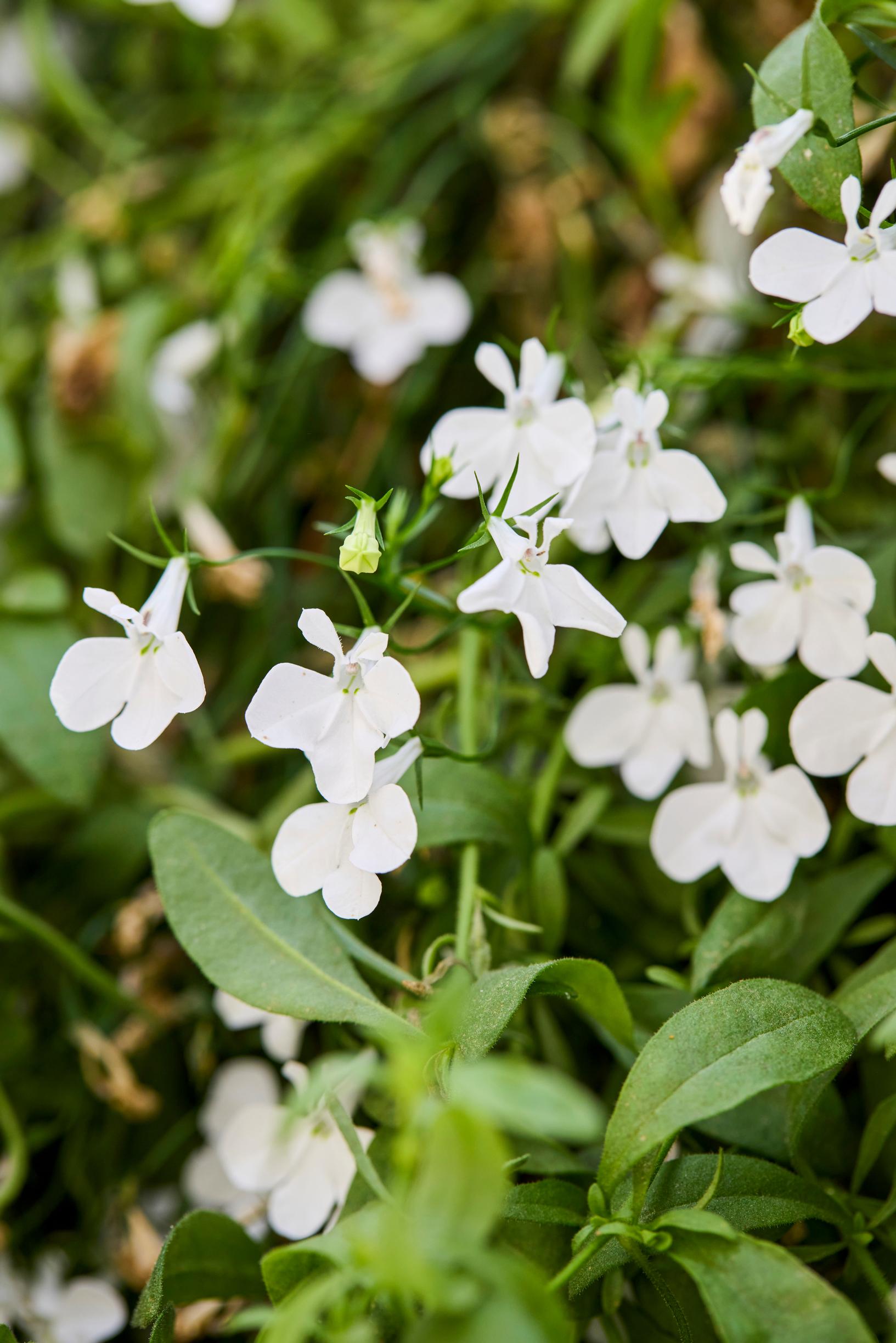
6. White micromeria (indian mint)
Micromeria douglasii
This dark-leaved, fast-growing plant is also known as “Indian mint.” It thrives in sun or partial shade.
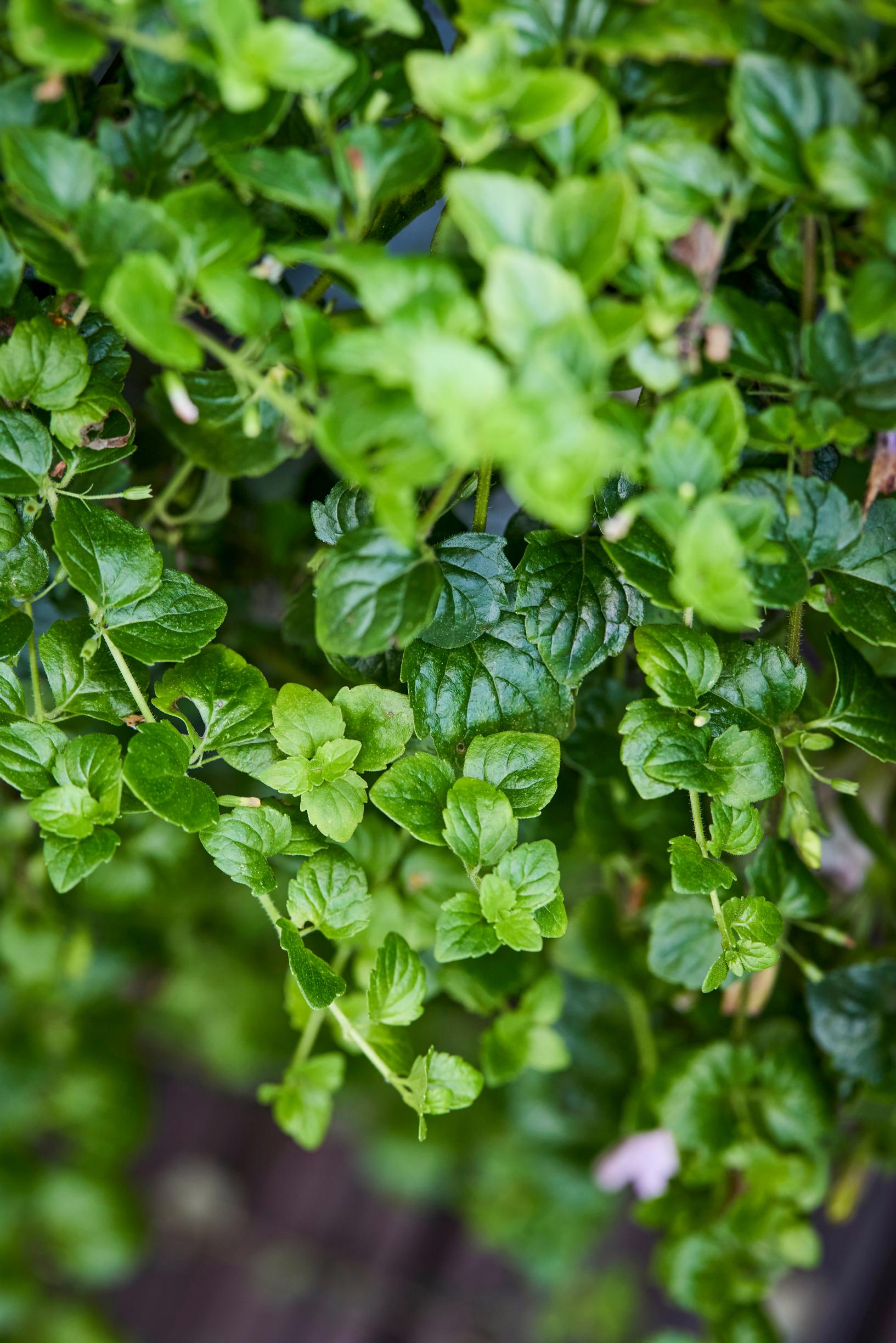
7. Double-flowered petunia
Double-flowered petunias do best under cover, shielded from rain. The variety selection is enchantingly broad.
